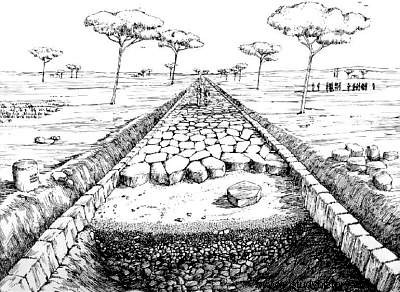
Until the 400s, the Romans used tracks to move from Rome to surrounding cities. The raid of the Gauls of Brennus, which will prove disastrous for the Romans in -390, will thus be the first revealer of the inefficiency of the defensive system of Rome, mainly due to the slow progress of the troops on the roads of the time. . The need for better defense combined with a desire for expansion and hegemony over Italy led a Roman Republic that was still fragile and threatened from outside to set up a network of solid gravel roads and relays, better suited to his needs. These axes allowed faster and easier circulation of commercial goods, but also prompt transfers of troops.
The first way was created in -312 by Appius Claudius Caecus to connect Rome to Capua:it is the via Appia, the Appian way. At the end of the Roman Republic, the entire territory of the Italian peninsula was equipped with these main axes, each road bearing the name of the Consul who had created it. These roads were paved only exceptionally:inside the cities and around them (except the Via Appia, which was gradually paved all along its route). Elsewhere, sands and aggregates were taken from nearby open quarries. It seems that earth may have covered the cobblestones to alleviate the discomfort. Moreover, the stone slabs that were used to make these roads were made of sand, earth and gravel, all in a hole and covered with a slab.
